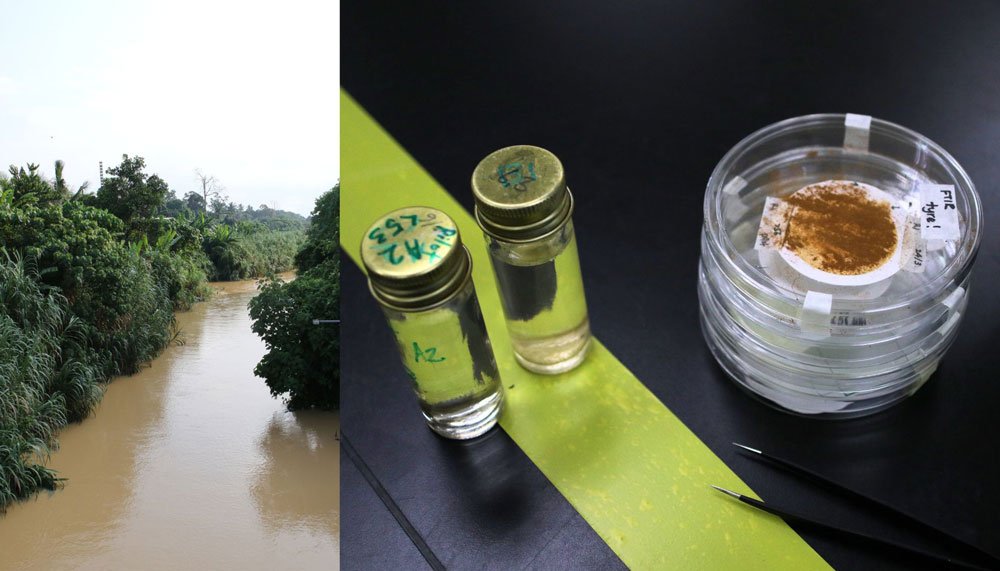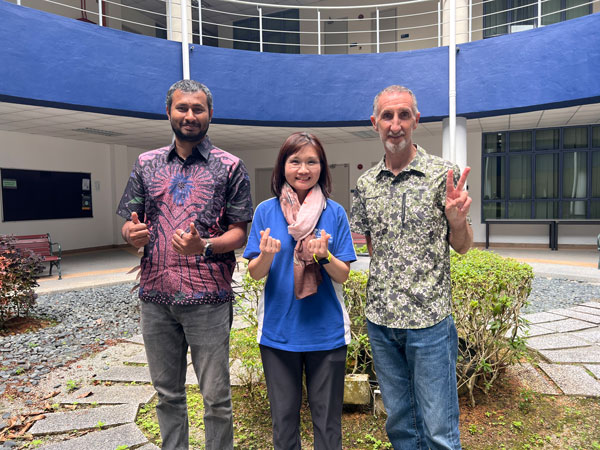Rivers play host to an abundance of life, provide the water needed by growing human populations, and are vital transport routeways. Now imagine microscopic pieces of plastic and traces of pharmaceutical waste silently infiltrating these waters, accumulating in fish and wildlife, and eventually, in humans.

Water from Sungai Semenyih being filtered in the laboratory, leaving behind microplastics
Such is the reality uncovered by a research team led by Professor Chris Gibbins, Professor Ting Kang Nee, and Associate Professor Dr Sivathass Bannir Selvam. Their work has shed light on the hidden dangers of so called ‘novel contaminants’ – overlooked pollutants that are now recognised as significant threats to aquatic organisms and public health.
The Silent Threat in Our Waters
“The findings were alarming. We found microplastics everywhere - in river water, in insects and in the fish we eat,” explained Professor Gibbins. “On top of understanding how badly our rivers are contaminated with these pollutants, our priority is to find practical ways to remove them.”
From their research, the team developed an innovative, sustainable filtration system that is designed to capture plastic microfibres from wastewater (e.g., washing machines) before they reach rivers. If scaled up in application, this technology could dramatically reduce plastic pollution from households and industry.
Meanwhile, Professor Ting investigates the human effects of microplastics, revealing alarming links to inflammation and health risks. “These tiny particles aren’t harmless. On the contrary, they have adverse health effects, and greater understanding of this would encourage stronger environmental and health policies,” says Professor Ting.
From Lab Discoveries to Real-World Impact

(from left to right) Dr Sivathass, Professor Ting and Professor Gibbins
Professor Sivathass highlights the team’s commitment to raising awareness beyond the lab, and in translating research into tangible outcomes. “We engage with local communities and schools across the nation, educating children and adults alike on plastic waste reduction, as well as how we can better protect our waterways. Science alone isn’t enough – we need everyone on board.”
Together, this trio embodies a mission of impactful, interdisciplinary research, aligned with strategic priorities in sustainability, health, and environmental stewardship. The optimal time for action to safeguard Malaysia’s natural resources and public wellbeing is now.
More than pollution, their work is about ensuring a healthier, cleaner future for generations to come, through greater partnerships, dialogue, and awareness campaigns.